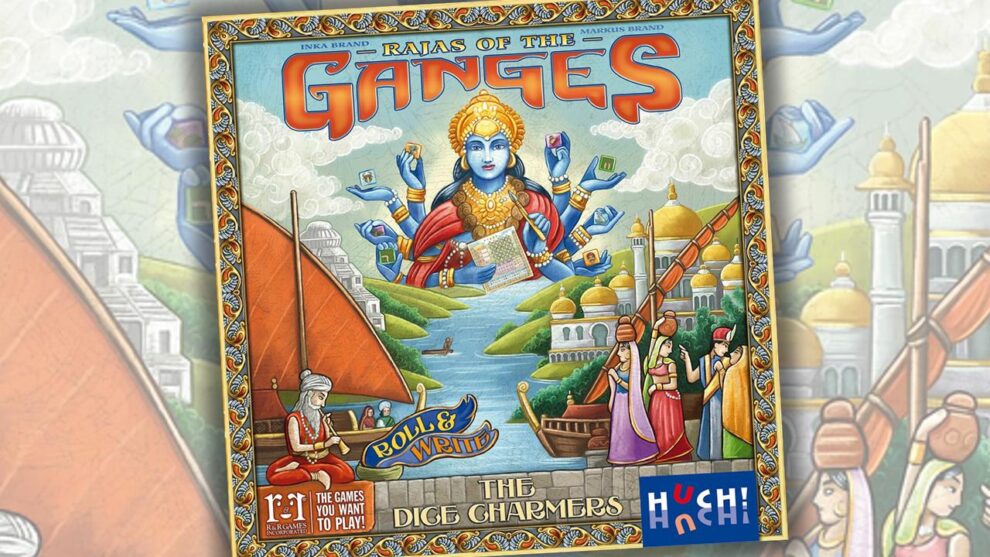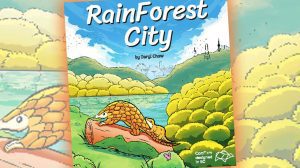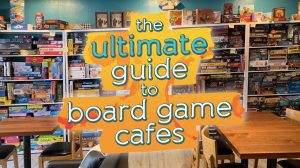In honor of the eight dice that drive the action of Rajas of the Ganges: The Dice Charmers, I thought I would challenge myself to review this roll and write gem using eight points:
ONE— The Elephant
I’m not typically enamored of games requiring 3D cardboard construction every time the box opens. We do build the elephant every time we play, though, mostly because laying only its back piece—or its face, or an ear—flat on the table is slightly disturbing. Thankfully it’s only a few pieces and it stands well enough. I guess the takeaway for publishers is this: if you want your gimmick to be used, make any possible shortcuts really awkward. But I digress. The active player selects one of the eight dice (four colored pairs) for their own, but the matching die rests atop the elephant, just out of reach of the other players as they make their selections from the remaining set; a lovely restrictive tension to begin each round.
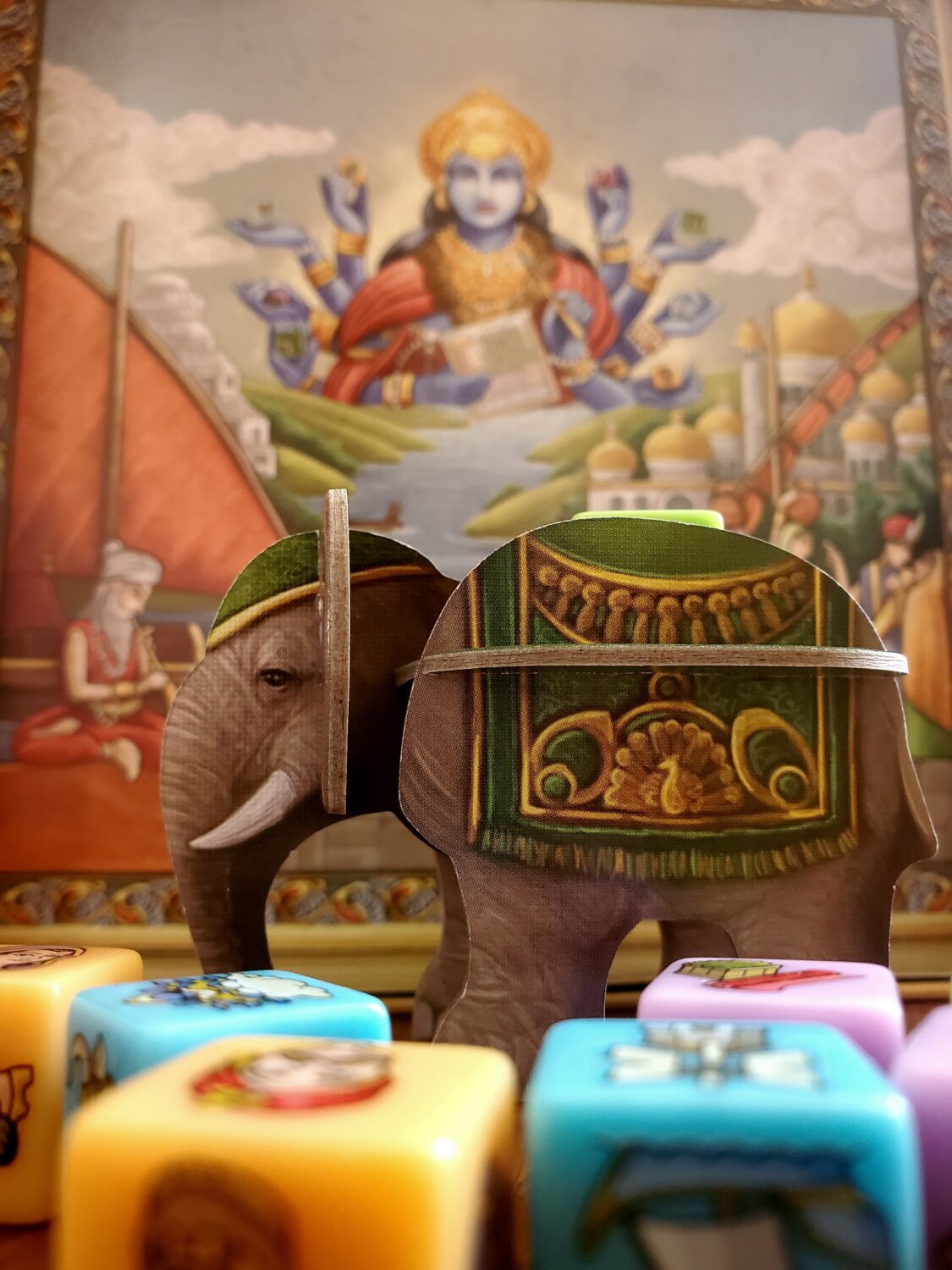
TWO— Karma
The die on the elephant is not entirely disabled. Players might spend karma to reroll the removed die, plus any one other, in an attempt to secure the desired action. Quite fitting is the fact that the player must then use one of the two dice regardless of the result. This cosmic mechanic features risk, reward, and/or retribution. Let’s just hope you’ve kept your gameplay tactics honorable prior to this unpredictable outcome.
THREE— The River
Each of the two blue dice contain six icons. The icons each appear three times on the river. Moving forward by the dice involves moving forward to the next iteration of the icon selected. This could be a slow paddle of one space or a motorboat five, skipping all the goodies along the way in a steroid-induced hopscotch action. Movement tensions like these are fun in and of themselves. But I really enjoy that The Dice Charmers includes mechanisms for moving backward along the river as well, dipping toes in bygone waters, only to then move from the front-most space once again on the next turn. While it might seem that the river is too kind in allowing players to reach back, I contend that knowledge of the possibility of backward movement sometimes contributes to poor decisions—decisions made in hastily calculated, but ultimately entertaining, hope.
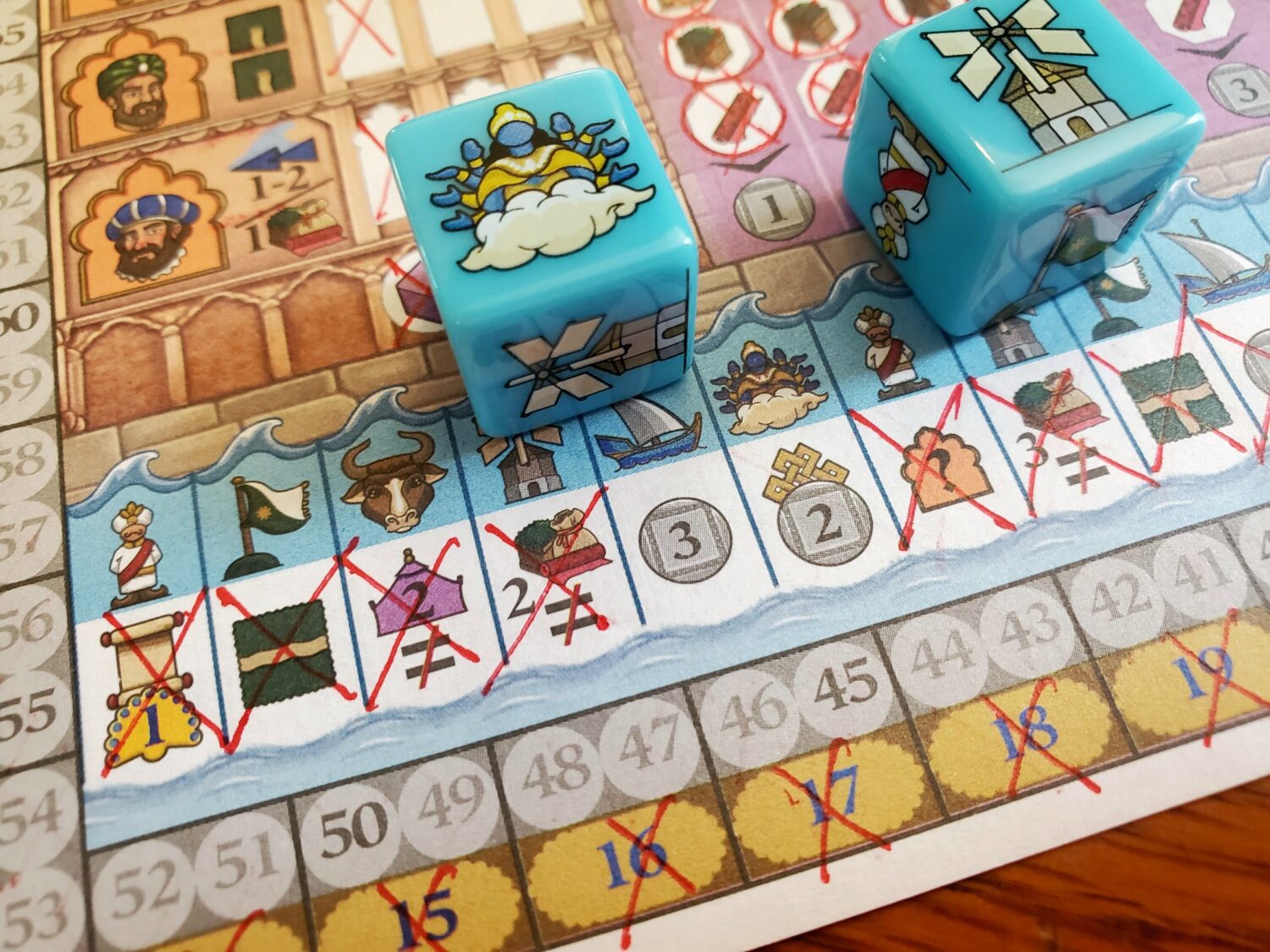
FOUR— Goods
The purple goods dice are boring. Every side contains two goods, sometimes in pairs, sometimes in combination. Collect. Circle. Hope to sell them when you encounter an open market later. The whole thing sounds bland, and that’s what makes it wonderful. You have to take the bland and boring, even though you don’t want to. The scoring track here mimics Rajas of the Ganges in that players track Prestige from the top left corner (clockwise) and Money from the top right (counter-clockwise) with the game ending when someone’s two paths cross. The game is well designed to require a cash engine if players actually want to win. It never feels fruitful to just circle two goods while your neighbor is unleashing an eleventy-six move combo next door. True confession: the shame of moments like that brings a smile to my face.
FIVE— The Great Mogul
Six eminent human figures are waiting in the Palace to grant their boons to players should they select the orange dice. The Great Mogul, though, is the sort of selection every roll and write game needs. By carving an X in his box, players get to?— just pick a different person. It’s as if they only had five ideas but they had to put something else on the page to match the die. I tell you, though, everyone takes the Great Mogul as if he is made of PayDay candy bars (those are my favorite, anyway, feel free to insert your own guilty pleasure as needed), simply because he allows carving two X’s. How is that so enticing?! Each of the six can only be selected three times in the game for their actions, and they do release bonuses as you exhaust them, but for some reason the Mogul is always abuzz with excitement. Why travel up the river, sell goods, or move on the river when you can—well, you’re going to do that anyway after you hit up the Mogul.
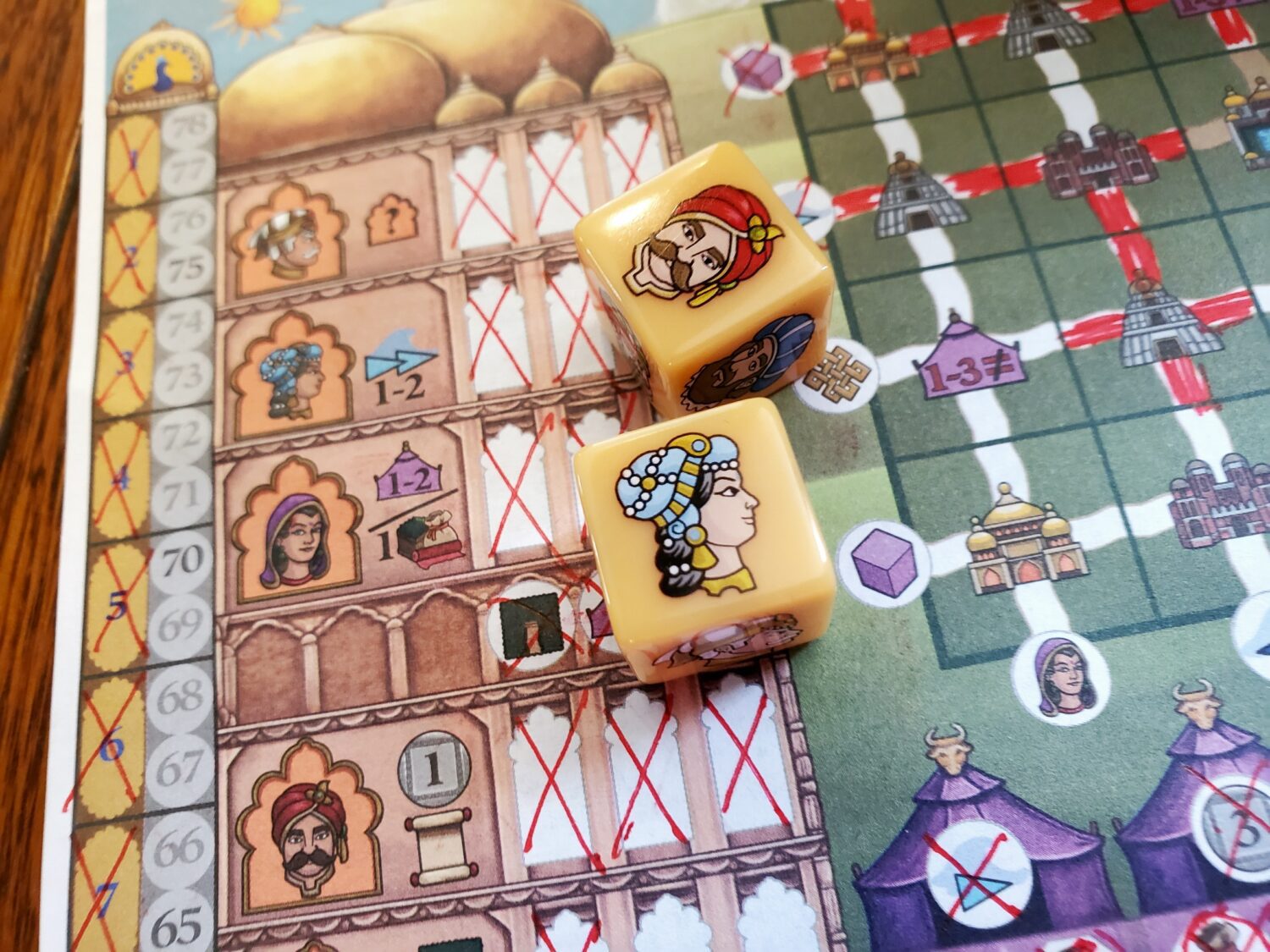
SIX— Half-Roads
Players branch several roads out from their residence across a gridded map, “building” (passing through) pre-determined buildings for points and reaching the perimeter for bonuses. The buildings are dead center in each square with roads popping out the four cardinal directions. Dice give straight lines, 90° turns, or a pair of half-roads. Half-roads create dilemmas. They can be used to build straight lines, 90° turns, branch off to collect a perimeter bonus, or—and this is the fun one—they just get dropped onto the map “for later.” Half-roads are the real decision points because they cannot be used to start a new square unless both halves are used together. No, they are most often used as little seedlings, plans for the future that may or may not prove useful. They turn a straight into a T, or a T into a cross. They are all about creating possibility, but—like the goods—they don’t always feel like a fruitful turn. And yet, they often provide a bit of magic as well.
SEVEN— Combos
Yes, this is that type of roll and write. Jump a few spots on the river to hit the wild Palace icon, where you (of course) check in with the Great Mogul so you can move to the Master Builder to gather two half-roads which you then use to hit a perimeter bonus, a move on the river, that allows you sell two goods for coins each, and since those were the last two goods in the grouping of goods, you get another move on the river. Do you see how this game works? If you’re a combo person and you’re looking for a title more bonkers than, say, Joan of Arc: Orleans Draw & Write, you will love it. If you don’t like spending ink and mentally tracking possibilities, it’ll feel like vinegar on the teeth and smoke in the eyes.
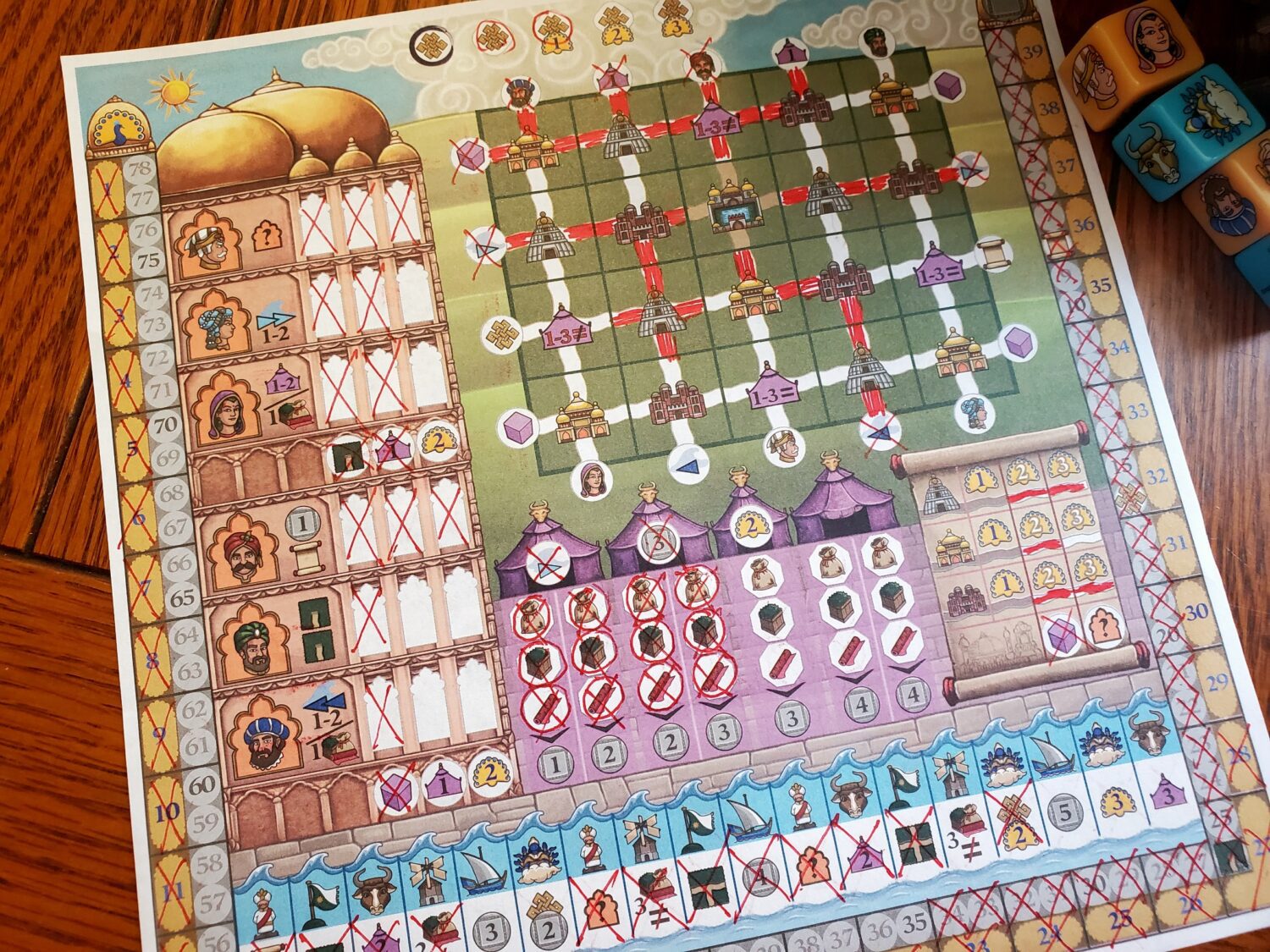
EIGHT— Nighttime
I like that The Dice Charmers comes with a second map, a nighttime affair that’s just a little more juicy. The bonuses are sweeter (I haven’t even covered the lot in this article) and the opportunities are distributed just a wee bit different to give the game an extra gear. We have plowed through a lot of pages in both maps to date. We choose based on our mood.
A Charmer (OK, technically NINE)
I really do like Rajas of the Ganges: The Dice Charmers. It’s been around since 2020, yet it largely flies under the radar despite a decent reception. I find the combos, despite the fact that they can go on for miles, are fairly easy to track—easier, perhaps, than Three Sisters, which is another of our combo-rific favorites in the genre. There are definitely copies new and old about if it sounds like your cup of tea. It’s the sort of offshoot that makes me want to play the original (I’ve not yet had the pleasure), but I already love that the spirit of the original is hanging around in a lighter, smaller box with a smaller play time and a family-friendly pace.


